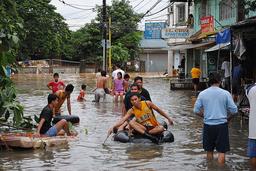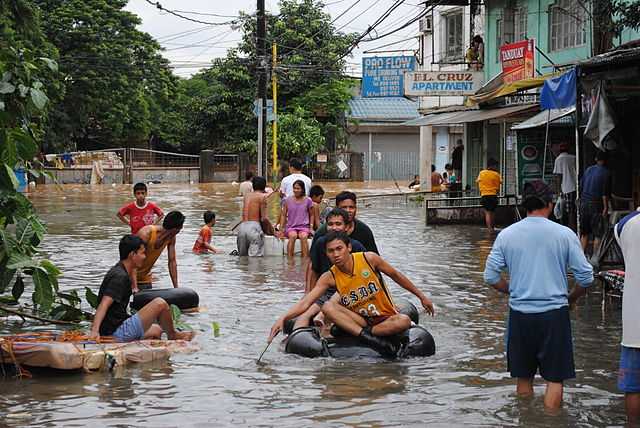

Heavy downpour that led to flooding along EDSA last Saturday was caused by clogged drains, according to the Metropolitan Manila Development Authority (MMDA).
“Nung Sabado po, meron kaming nakuha na isang buong plywood at mga [bato na] malalaki na naging sanhi po ng pagbara ng tubig at nag-cause po ng pagbaha [...] after namin maalis yung mga debris ay humupa naman po kaagad yung tubig,” MMDA Chairman Romando Artes said in an interview with DZRH.
The MMDA chief added that the huge chunk of plywood and rock debris removed from the drainage came from nearby construction sites, citing downpours from the previous months’ typhoons that did not result in flooding around the same area.
“Mas malakas po na bagyo at ulan ang dumating satin nitong mga nakaraang buwan [pero] hindi naman po nagbabaha diyan [...] ‘yan po yung sinasabi namin na kahit anong laki ng ating mga drainage system, kung tatapunan naman po natin ng basura yung mga water waste natin na dumadaloy diyan tapos mababarahan, talaga pong mag-cause ng flash flood,” he said
Joint project with DPWH, LGUs
Artes also acknowledged MMDA’s joint project with the Department of Public Works and Highways (DPWH) and local government units (LGUs) in creating a 50-year drainage master plan that would alleviate flooding in the metro.
“‘Yun pong ating drainage master plan na 50 years ang effectivity ay amin pong binabalangkas. Magkakatulong po kami diyan ng DPWH, MMDA, at mga LGUs para po yung atin pong drainage system ay maging integrated, tuloy-tuloy yung daloy ng tubig, yung irrigation [...] ‘yan po ay popondohan ng World Bank,” he said.
“Sa kasalukuyan po, ‘yan ay amin na pong dini-discuss para po ma-fine tune yung points of reference at nagb-benchmark po muna kami at nagi-imbentaryo kasi yung iba pong mga LGUs meron nang sariling masterplan,” Artes added, further stating that the drainage master plan might begin next year.
According to the Philippine Atmospheric, Geophysical and Astronomical Services Administration (PAGASA), the country experiences an average of 20 tropical cyclones per year, making it home to frequent bouts of severe flooding.




